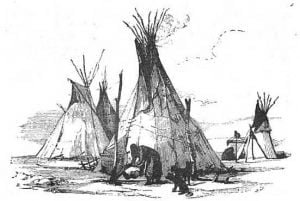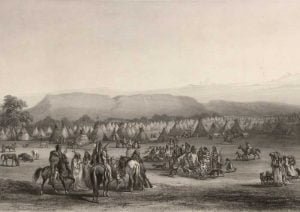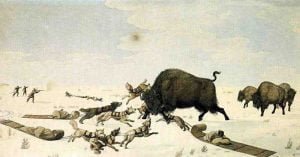Houses of the Omaha Tribe
When Lewis and Clark ascended the Missouri in 1804 they found the Omaha village not far from the Missouri, in the present Dakota County, Nebraska. On the 13th of August the expedition reached the mouth of a creek entering the right bank of the Missouri. Just beyond they encamped on a sandbar, “opposite the lower point of a large island.” From here Sergeant Ordway and four men were sent to the Omaha village and returned the following day. “After crossing a prairie covered with high grass, they reached the Maha creek, along which they proceeded to its three forks, which … Read more













